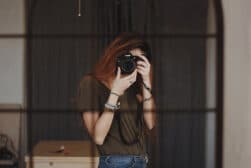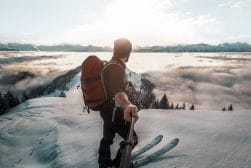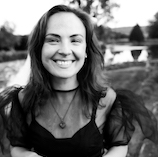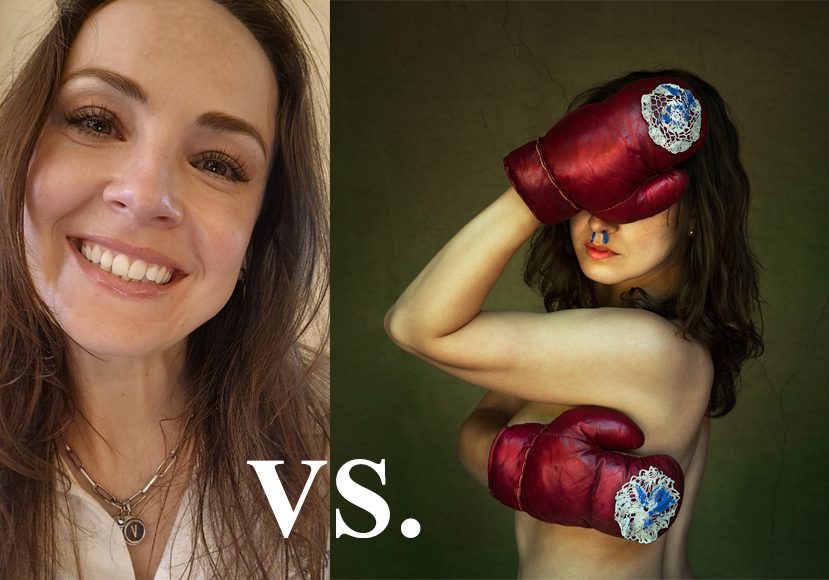
Beyond the Selfie: Elevating Self-Portraiture in Photography
How do you go from taking selfies to making artistic self-portraiture? From concept to composition, that's what we'll learn in this guide.
You might be thinking of many things when thinking of social media, from connecting with others, through fuelling your creativity with inspiration, all the way to memes and perhaps even about trying to kick a bit of an addiction to scrolling (hi there!).
Oh and of course there is the selfie culture!
A quick search on Instagram, at the time of writing this article, reveals over 450 million photos with the hashtag #selfie.
Now, as someone wanting to learn more about storytelling through self-portraiture in photography, you might be wondering how to start differentiating between selfies and the art of self-portraiture.
Let me help!
The History of Selfies
When you think of the word itself, you would most likely associate selfies with your mobile phones and social media. But actually, selfies have been around for a long time.
The first recorded selfie was taken by Robert Cornelius, a chemist and metallurgist, in 1839.
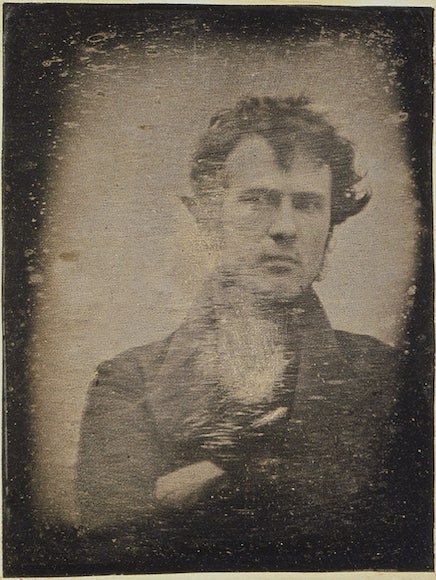
Robert Cornelius, 1839
Another fun fact: the first recorded teenage selfie was taken by 13-year-old The Grand Duchess, Anastasia Nikolaevna, of Russia, in 1913.
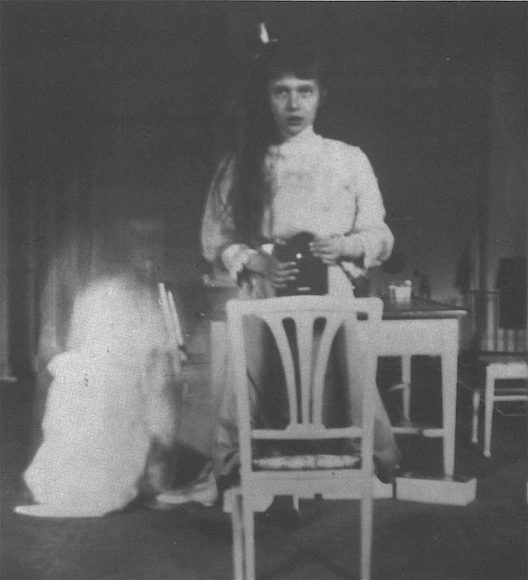
The Grand Duchess Anastasia Nikolaevna, 1913 with a Kodak Brownie (via Retronaut)
That’s The Anastasia taking a selfie!
According to Alexander Palace Time Machine, in a letter accompanying the photograph, she wrote: “I took this picture of myself looking at the mirror. It was very hard as my hands were trembling.”
To be fair, the term “selfie” specifically refers to self-portraits taken with a smartphone, often shared on social media platforms, so you’re not wrong.
It was in the mid-2000s the phenomenon spread when Facebook and Instagram were on the rise.
- Read more: How to Take Good Selfies
Is It Self-Portraiture?
Well, yes, by definition all selfies are self-portraits in the broad sense of the term. They are taken of your own self, after all.
There is, however, a difference between selfies and self-portraits in the stricter sense of the two photography forms.
While both involve taking a photograph of yourself, their purpose and intention are different.
Selfies typically portray the photographer documenting a moment in time. A quick snapshot of life, if you like.
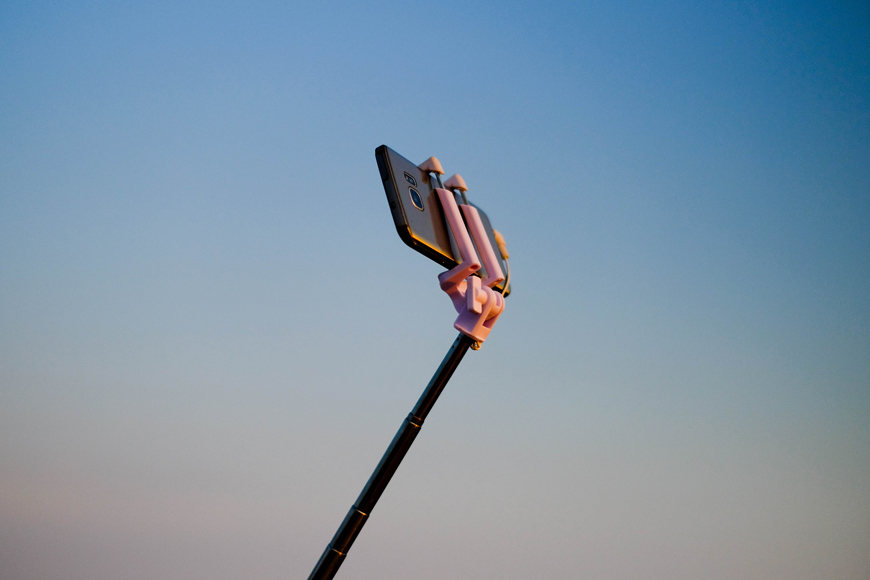
Making memories, “Strike a pose!”, that kind of thing, often without much consideration for technical or artistic skills.
Nowadays, even our grandparents know how to take candid shots of themselves to send to their grandkids, just to give a bit of substance to them saying “hi”.
But would we call this art?
Intention
A self-portrait becomes art when it’s created with intention. The real reaching-deep-into-your-soul kind of intention.
How Much Do You REALLY Know About Photography?! 🤔
Test your photography knowledge with this quick quiz!
See how much you really know about photography...

Personally speaking, as a self-portrait artist, I would never call my quick-snap selfies, showing off an outfit to my sister, a self-portrait.
For me, there is no artistic purpose behind those shots.
Behind my self-portraits, however, there is a ton of work to eventually achieve a picture that can be appreciated as art.
Everything is considered within the frame:
- Central message/story
- Skill set
- Atmosphere
- Location
- Composition
- Hair & make-up (Ok, this one is probably quite true for most selfies too!)
- Wardrobe
- Lighting
- Colour palette
- Set design
- Posing
- Time period
- Props
- Camera lens
- Angles
- Mood/emotion
- Editing style
Technique
A quote I keep close to my heart is by my friend, dearest David Hurn, a celebrated reportage photographer from Wales, who says: “My dog can take a nice picture if I put a camera on his collar.”

He’s not wrong!
Anyone can take one great snap but you begin to stand out in the crowd when you start showing consistency in a larger body of work.
Consistency in producing work constantly, and consistency in your style of photography (or any artistic medium).
To achieve your style, or what many like to call “your artistic voice”, you’ll have to work on technique. Below are a few areas to tackle with your own authentic approach.
Conceptualisation
In other words, it’s about taking your sweet time coming up with an idea for your photograph.
I say “taking your time” because a good concept needs layers. Working out layers needs time to develop them well.
You’ll need to cover a good number of areas mentioned above under Intention to achieve depth in your visual storytelling.
Unfamiliar by Veronika Lavey, sketch to final
Get a notebook and make stick-man drawings (if you can do better, do better if you like) of what you see in your head, then build around it.
How will it become a layered story? What elements can you use to accomplish that?
Don’t forget to read 11 Tips for Capturing Authenticity in Self-Portrait Photography to help you dive deeper into finding a central message towards creating concepts.
Composition
Another area that distinguishes simple selfies from artistic self-portraits is how you arrange the visual elements you conceptualised for your photograph.
It’s hard to define what makes a good composition, other than that it just needs to feel right.
No, we can do better than that.
- A good composition will guide your viewers’ eyes towards what you deem important within the frame; the very thing that helps convey your intended message. One way of doing this is with leading lines: roads, rows of trees, fencing, etc. Another is highlighting the subject.
- A good composition could have a pleasing sense of harmony and possibly balance, if that’s what you’re intending. You might of course want your image to be chaotic and that’s absolutely fine.
- A good composition may utilise the rule of thirds, where you divide the image into a grid of nine equal parts, with two horizontal and two vertical lines, placing the subject on one of the intersections. But it may not.
Ultimately though, a good composition really does just need to feel right.
Robert Mapplethorpe’s body of self-portraits is a great example. He utilised strong composition to create a sense of power and intensity in his striking photographs.
Lighting
So important!
I remember in the beginning of my photography career, my images looked so flat and it took me a while and a lot of learning and experimentation to figure out that I didn’t focus on lighting my subject properly.
Not only does good lighting make the image “pop,” but it can also set the mood, which directly feeds into creating the intended emotion within the frame.
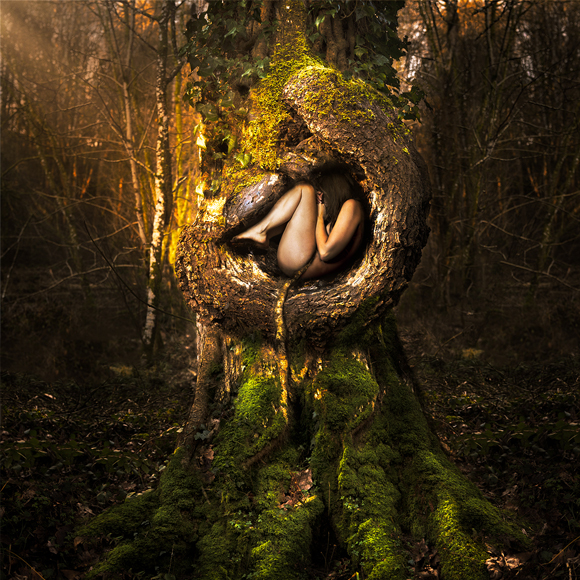
Natured by Veronika Lavey
You may use natural or studio light, or any available light you can find. You may even, like I do, play in editing software to add deeper shadows and bring up brighter highlights in post-processing.
Though obviously not a photographer, it’s worth analysing Rembrandt’s artworks. He created numerous self-portraits, many of which are notable for their masterful use of light and shadow.
Props, Costumes and Symbolism
Like all the contributing factors we discussed above, props and costumes will also help support your concept and add meaning to your image, if used right.
I use props mainly to symbolise an idea I have for the story I wish to convey. It’s my favourite thing to play with!
We cover symbolism in self-portrait photography more in-depth in another article, but to get you moving on from a simple selfie, keep in mind that symbolism can add deeper meaning by allowing you to communicate to your audience complex emotions and concepts in a more subtle way.
Check out the work of Cindy Sherman, whose interest in experimenting with different identities was crucially helped by making great use of costumes and props.
Similarly, Yasumasa Morimura’s signature is to dress up as famous figures from pop culture, literature and art history to explore themes of identity, gender and culture.
Moving forward
When moving on from selfies to creating artistic self-portraits it’s essential to be intentional.
Using elements such as those mentioned above to thoughtfully add depth to visual stories will evoke those all-important emotions you want both from your viewers and, arguably even more importantly, from yourself!
There is a time and place for selfies and truthfully there is nothing wrong with them.
Not only do I enjoy sending my family and loved ones a quick selfie for one reason or another, but I also believe it’s partly because of them that artistic self-portraiture becomes even more powerful.
After all, self-portraiture stands out beautifully next to its more superficial cousin by offering a deeper, more meaningful connection with the viewer through layers and layers and layers of thematically rich narrative.
If you want to read more of this series, check out my post on how to overcome shyness in self-portrait photography.

Check out these 8 essential tools to help you succeed as a professional photographer.
Includes limited-time discounts.
Veronika Lavey is a multi-cultural artist specialising in conceptual self-portraiture. She is recognised for her dark, thought-provoking fine art photography.
When Veronika doesn’t have a camera or a paint brush in her hands, she’s most likely walking her giant fluffy dog, Sonic in the woods, or hanging out with her family.






